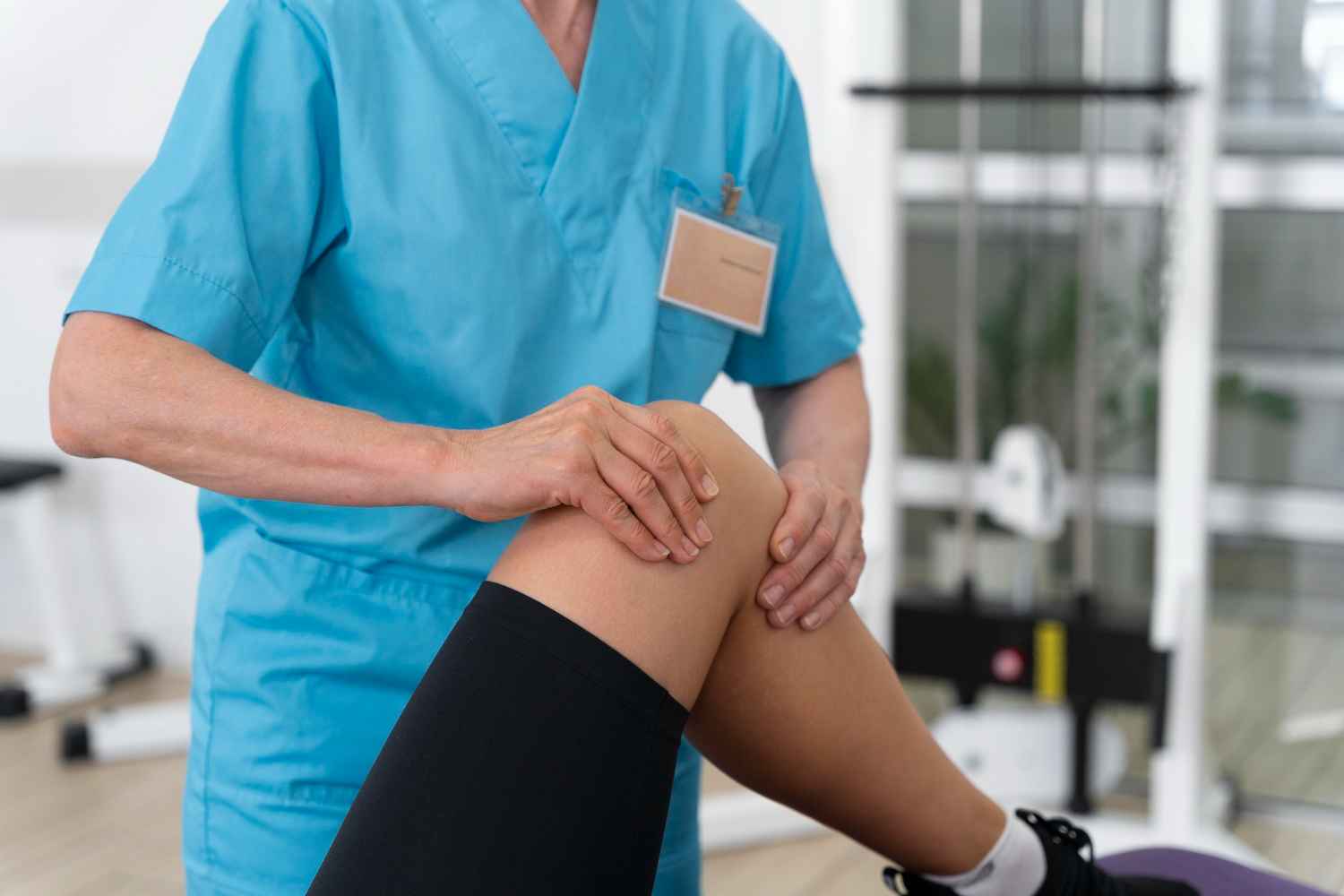Patellar tendonitis treatment? Ice, rest, wrap- sounds simple, right? Not quite. RICE helps by easing pain and swelling early on, but stopping there can stall recovery or worsen it.
Why? Because this isn’t just a bruise, it’s damage to the tendon that takes a beating every time you run or jump hard in sports. And that damage won’t heal with rest alone.
The fix? Active rehab. Smart exercises. A dedicated plan.
Still just icing your knees? Let’s change that.
Understanding Patellar Tendonitis: Causes and Symptoms
Often called “jumper’s knee,” patellar tendonitis commonly affects athletes and active individuals, especially those who run or jump frequently.
Common causes:
- Intense running or jumping
- Poor form or training habits
- Sudden increases in activity
- Muscle imbalances or tightness
Symptoms include:
- Pain just below the kneecap
- Swelling or tenderness
- Stiffness or limited mobility
- Trouble climbing stairs or squatting
Early diagnosis is key for successful patellar tendonitis treatment; ignoring it can lead to chronic damage.
Why RICE Is No Longer the Gold Standard
RICE (Rest, Ice, Compression, Elevation) can ease swelling after an injury, but tendonitis is more than inflammation. It’s microtears and wear that need active care to heal.
The problem with RICE:
- It’s passive—tendons need movement to recover
- It ignores muscle imbalances and poor mechanics.
- Too much rest can lead to stiffness and weakness.
Doctors now recommend a more innovative approach: guided, controlled movement. It helps rebuild tendon strength and leads to better long-term recovery.
Modern Evidence-Based Treatments for Patellar Tendonitis
- Physical Therapy and Movement-Based Rehab
Let’s start with what truly makes a difference: movement. The core of patellar tendonitis recovery is bright, progressive loading. Think of it as training the tendon, not punishing it.
One standout? Eccentric exercises. They stretch the muscle while it’s under tension, which helps the tendon rebuild and grow stronger.
But there’s more to the story. Are you stiff? Tight? Targeted mobility work and stretching are key. Your body needs the whole range to move well and heal well.
- Telehealth Evaluation and Personalized Treatment Plans
Can’t make it to a clinic? No problem. Expert clinicians can assess your condition remotely and create a plan that doesn’t disturb your lifestyle.
No waiting rooms. No long drives. Just a custom plan built around you.
And yes, you’ll still get real-time feedback and adjustments. Personalized care isn’t about location; it’s about attention.
- Manual Therapy and Neuromuscular Re-Education
Sometimes, you need more than just basic care in your patellar tendonitis treatment.. That’s where manual therapy steps in. Hands-on work helps ease pain and gets your tissues moving smoothly again.
Then there’s neuromuscular re-education — sounds complicated, but it’s just teaching your muscles to work the right way again. Think of it as rewiring your body’s control system to break bad movement habits before they become injuries.
- Bracing, Taping, and Activity Modification
Temporary bracing or taping support can offload tendon stress during flare-ups. Additionally, guided modifications in activity help you return to sports and daily tasks safely, without pushing too hard too soon.
When to See a Specialist and How Upswing Health Can Help
If your symptoms don’t improve with rest or basic care, it’s time to seek expert help. Watch for these red flags:
- Pain lasting more than a few days or worsening with activity.
- Swelling that doesn’t subside.
- Difficulty fully straightening your leg.
- Knee instability or weakness
- Pain affecting sleep or daily movement.
- A popping or tearing sensation at the time of injury
Early professional care prevents chronic issues, speeds healing, and often avoids unnecessary imaging or in-person visits. Upswing Health’s telehealth model ensures you get expert orthopedic care quickly, without the hassle.
Prevention Tips for Long-Term Knee Health
- Load Management
Knees thrive on consistency. Sudden spikes in training? That’s when trouble starts. Gradually increase intensity and give your joints time to adapt to support ongoing patellar tendonitis treatment.
- Cross-Training and Rest Periods
Incorporate variety—activities like cycling, swimming, or other low-impact options ease pressure on your knees. Just as important? Rest days. They’re when your body repairs and your joints recover.
- Warm-Up and Flexibility Routines
A proper warm-up prepares your body and protects your knees. Stretch regularly—tight quads or calves can strain the patellar tendon. A few minutes a day can prevent months of pain.
- Continued Support from Upswing Health for Injury Prevention
You don’t have to manage knee care alone. Upswing Health offers expert, personalized guidance—no waiting rooms, no guesswork—just smart, consistent support to keep your knees strong and injury-free.
Conclusion
If you are implementing RICE for patellar tendonitis treatment even now? That approach alone won’t cut it anymore. Recovery today is active, personalized, and backed by real science.
Upswing Health connects you instantly with orthopedic pros via telehealth, no referrals needed. Get a rehab plan made just for you and start healing smarter, not harder.
Why wait? Don’t let knee pain slow you down. Take control with Upswing Health now.



